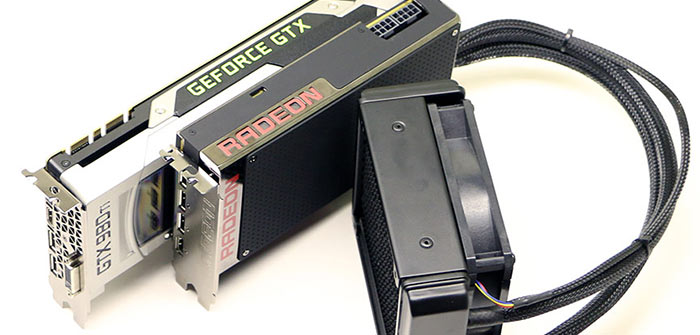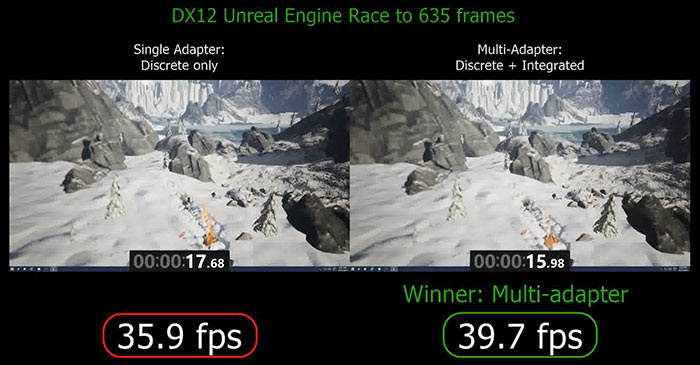Microsoft outlined the Multiadapter functionality of DirectX 12 back in April this year. It talked about the untapped potential in PCs of the rather common second (integrated) GPU equipped yet idling in many systems. After a brief mention of combining several of the same brands of GPU, Microsoft talked about leveraging "two disparate GPUs simultaneously to maximize performance". The specific example Microsoft gave was mixing a discrete Nvidia GPU with a system's integrated Intel GPU.

Now the PC enthusiasts over at AnandTech have conducted their own Multiadapter testing under DirectX 12. AnandTech writer Ryan Smith got his hands on a custom build of Ashes of the Singularity, with DirectX 12's Explicit Multiadapter Unlinked mode enabled, courtesy of the developers at Oxide Games. This game build enables mixed GPUs using the alternate frame rendering (AFR) mode that was tested with various permutations of AMD and Nvidia graphics cards.
Smith conducted Ashes of the Singularity benchmarks using pairs of graphics cards from single and mixed vendors, noted the results and made some interesting observations. The top performance results table was crowned by an AMD Radeon Fury X and Nvidia GeForce GTX 980 Ti pairing. Lagging slightly behind that combo in the 2560x1440 2x MSAA performance table was a combination of Nvidia GeForce GTX 980 Ti and AMD Radeon Fury X. Yes, this is the same pair of cards, but it seems to matter which is the primary card in your system. I've embedded this high end GPU table below.

Other benchmark settings were tested such as at 4K resolutions and Smith had a look at mixing '2012 GPUs' such as the HD7970 & GTX 680 on another page of the AnandTech analysis. In this case it was very important to have the AMD graphics card as the primary adapter to enjoy performance scaling.
It's great to see the interoperability on offer in DirectX 12 with multiple vendor cards that one would think differ so greatly. With AFR, its best to use two cards with similar performance characteristics, so one isn't waiting too long for the other.
Microsoft's DX12 is also capable of other kinds of GPU resource mixing. One of the most interesting mixing types for many may be, as hinted in the intro, where your PC's dGPU gets a helping hand from the often much less powerful iGPU. In this unequal relationship developers can target the iGPU for lesser but important GPU tasks like graphics post processing.

Looking forward it's going to be interesting to see how this technology progresses, if it picks up more support from developers and becomes the norm in the PC games of the future.













